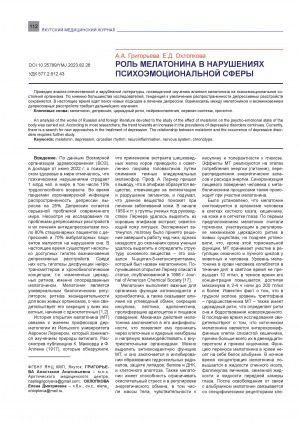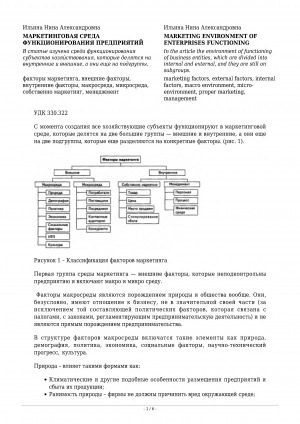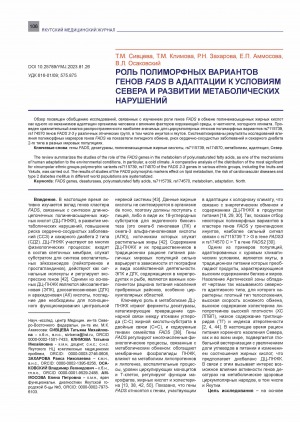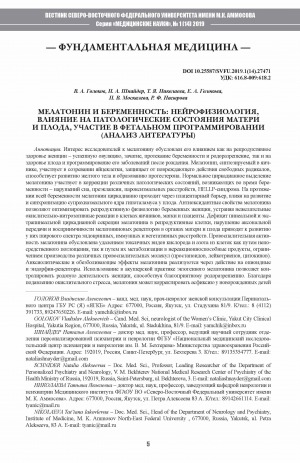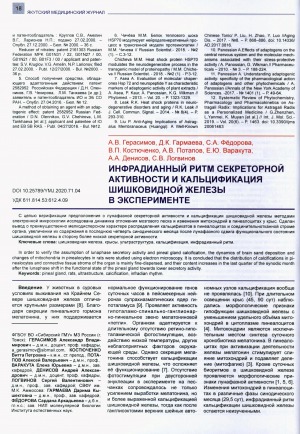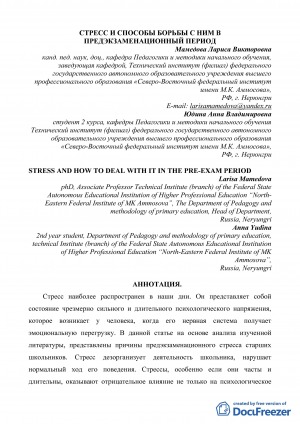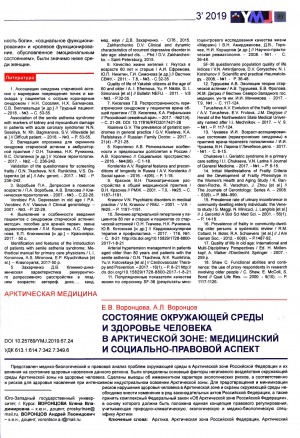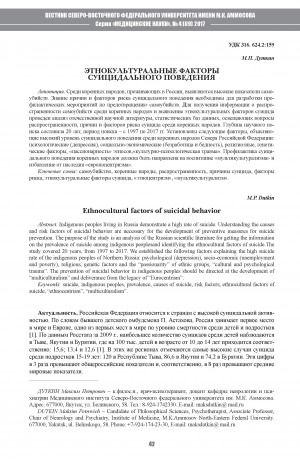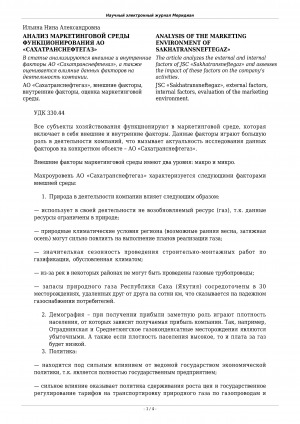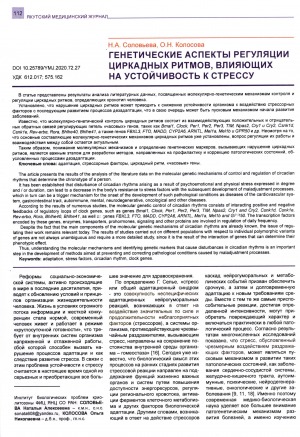
Генетические аспекты регуляции циркадных ритмов, влияющих на устойчивость к стрессу
Статья в журнале
Русский
612.017:575.162
адаптация; стрессорные факторы; циркадный ритм; "часовые" гены; adaptation; stress factors; circadian rhythm; clock genes
Медицина и здравоохранение / Медицинская генетика. Медико-генетическое консультирование
С. 112-115
Якутский медицинский журнал: научно-практический журнал Якутского научного центра Российской Академии медицинских наук и Правительства Республики Саха (Якутия)
Якутск, Сахаполиграфиздат
Основан в 2003 г.
Выходит 4 раза в год
1813-1905 (print), 2312-1017 (online)
Ежеквартальное научно-практическое издание для работников медицинской науки и образования, лечебно-профилактических учреждений практического здравоохранения. Включен в утвержденный ВАК РФ "Перечень ведущих рецензируемых научных журналов и изданий, в которых рекомендуется публикация основных научных результатов диссертаций на соискание ученой степени кандидата по биологическим наукам и медицине". Журнал включен в международную справочную систему по периодическим и продолжающимся изданиям "Ulrich's International Periodicals Directory".
Журнал включен в перечень ВАК, входит в систему РИНЦ, ISI
РИНЦ 2017: 0,107
Якутский медицинский журнал / научно-практический журнал Якутского научного центра Российской Академии медицинских наук и Правительства Республики Саха (Якутия) ; главный редактор А. Н. Романова. – 2003 - . – Якутск : Сахаполиграфиздат, 2003 - . – Выходит 4 раза в год. – ISSN 1813-1905 (print). – ISSN 2312 (online). – 2020, N 4 (72)
The article presents the results of the analysis of the literature data on the molecular genetic mechanisms of control and regulation of circadian rhythms that determine the chronotype of a person. It has been established that disturbance of circadian rhythms arising as a result of psychoemotional and physical stress expressed in degree and / or duration, can lead to a decrease in the body's resistance to stress factors with the subsequent development of maladjustment processes, which in turn can be a trigger mechanism for the onset of the development of such pathological conditions as diseases of the cardiovascular system, gastrointestinal tract, autoimmune, mental, neurodegenerative, oncological and other diseases. According to the results of numerous studies, the molecular genetic control of circadian rhythms consists of interacting positive and negative feedbacks of regulatory loops of clock genes, such as genes Bmal1, Clock, Per1, Per2, Per3, TIM, Npas2, Cry1 and Cry2, Csnk1d, Csnk1e, Rev-erbα, Rora, Bhlhe40, Bhlhe41, as well as genes FBXL3, FTO, MADD, CYP2A6, ARNTL, Mel1a, Mel1b and GPR50. The transcription factors encoded by these genes, enzymes, transporters, prohormones, signaling and other proteins are involved in regulation of daily frequency. Despite the fact that the main components of the molecular genetic mechanisms of circadian rhythms are already known, the issue of regulating their work remains relevant today. The results of studies carried out on different populations with respect to individual polymorphic variants of genes are not always unambiguous and require a more detailed study, since it is the result of the interaction of genes that can determine their phenotypic effect. Thus, understanding the molecular mechanisms and identifying genetic markers that cause disturbances in circadian rhythms is an important step in the development of methods aimed at preventing and correcting pathological conditions caused by maladjustment processes
Соловьева, Н. А. Генетические аспекты регуляции циркадных ритмов, влияющих на устойчивость к стрессу / Н. А. Соловьева, О. Н. Колосова // Якутский медицинский журнал. — 2020. — N 4 (72). — С. 112-115.
DOI: 10.25789/YMJ.2020.72.27
- Математика. Естественные науки > Общая биология. Антропология. Вирусология. Микробиология,
- Прикладные науки. Медицина. Ветеринария. Техника. Сельское хозяйство > Медицина > Анатомия. Физиология,
- НАУКА ЯКУТИИ > МАТЕМАТИКА. ЕСТЕСТВЕННЫЕ НАУКИ > Общая биология. Антропология. Вирусология. Микробиология,
- НАУКА ЯКУТИИ > ПРИКЛАДНЫЕ НАУКИ. МЕДИЦИНА. ТЕХНИКА. СЕЛЬСКОЕ ХОЗЯЙСТВО > Медицина > Анатомия. Физиология.
Войдите в систему, чтобы открыть документ
